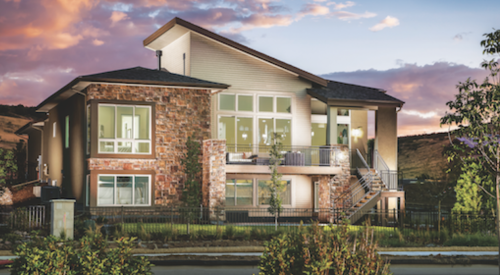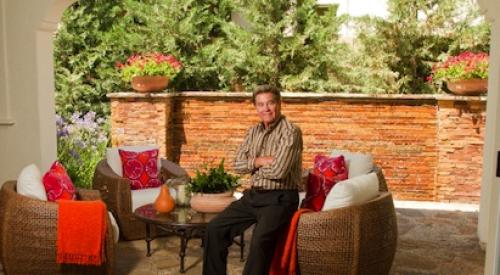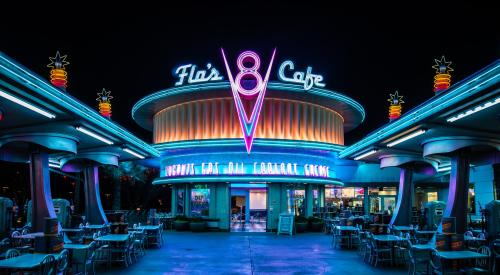Design leadership can bring with it a nifty little kicker on the bottom line. And for a startup builder, it’s probably the best of all routes to name recognition. You don’t have to be the biggest to be known as the best design innovator.
In today’s American housing markets, the best source for design innovation inspiration may be a walk through old urban neighborhoods built in the 1920s.
"That’s exactly what I just finished doing," says Sherm Harmer, vice chairman of Olson Co. of California, a specialist in urban infill on the West Coast. "The hottest new look in California replicates the Craftsman and Bungalow styles built in Pasadena and Santa Monica in the 1920s.
| Looking for design leadership? Jump on the TND bandwagon like American Heritage Homes, which sold 150 homes in nine months at Avalon Park in Orlando, Fla.
|
"We’re talking about a big emphasis on the front of the home as a space for people rather than cars. Getting away from streetscapes dominated by garage doors. Going back to front porches and interior courtyards that act as extended living space," Harmer says.
This is not just about nostalgic architecture. It’s also about land planning and the growing revolt against automobile-dominated neighborhoods. In a single phrase, it is about traditional neighborhood design. Alleys and rear-loaded garages. The quick path to design leadership in just about any housing market is to jump on this TND bandwagon.
John Wieland of Atlanta-based luxury housing Giant John Wieland Homes has a 30-year track record as a design leader and recently put the word out that he’s looking for architects with TND experience for his in-house architecture department.
"If you asked me about TND four years ago, I would have predicted a very small niche," says Wieland. "Even two years ago, I would have said we won’t do a lot of it. But today, I’m a convert. Either that or I’ve just given up fighting it.
"TND is very hot. The city fathers just love it. You can get TNDs approved in a lot of places where nothing else will fly. In Huntersville, North Carolina, they passed a zoning resolution that everything from now on must be TND. I would estimate that the Raleigh market is now 35% TND. It’s amazing," Wieland says.
However, TND creates a whole new set of challenges for builders and designers. All those house plans with garages on the front are history, but you can’t go back to those original 1920s designs because they won’t accommodate a new-millennium lifestyle. "That’s why we’re looking for architects," says Wieland.
Among large, public home builders, Atlanta-based Morrison Homes is a pioneer in designing product for TND communities. "We want to be there when our strategic partners in the development industry decide this is the way they want to go," says John Rymer, Morrison's vice president of sales and marketing.
"Real TND is a niche product that may be 25% of the market. But what’s really coming of age now is a borrowing of ideas, hybrid designs that look like TND but don’t carry the 15% price premium associated with alley-loaded garages. You can put the garage in the back or on the side and still reach it with a driveway from the front.
"Between true TND and the hybrids, these nostalgic styles are now 15% of our production, heading for 20%," says Rymer. However, he thinks a big portion of the TND market will be represented by urban infill projects. "It’s very location-sensitive. You can’t drop TNDs in cornfields like conventional subdivisions. There’s a whole set of criteria that needs to be there to make it viable. Master-planned communities can do it, and so can small builders doing tear-downs in gentrifying urban neighborhoods.
"Big public builders can’t operate on that small scale," says Rymer. "But a small builder could pick up on some of the architecture and finishing details we’ve pioneered in places like Celebration (Disney’s Orlando, Fla., TND) and make it work."
Sounds like an opportunity to us.












